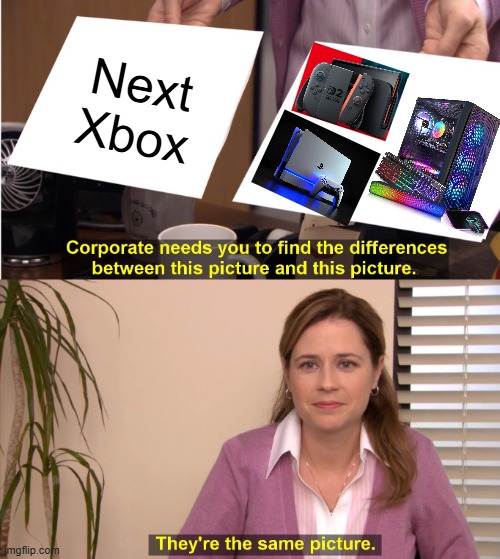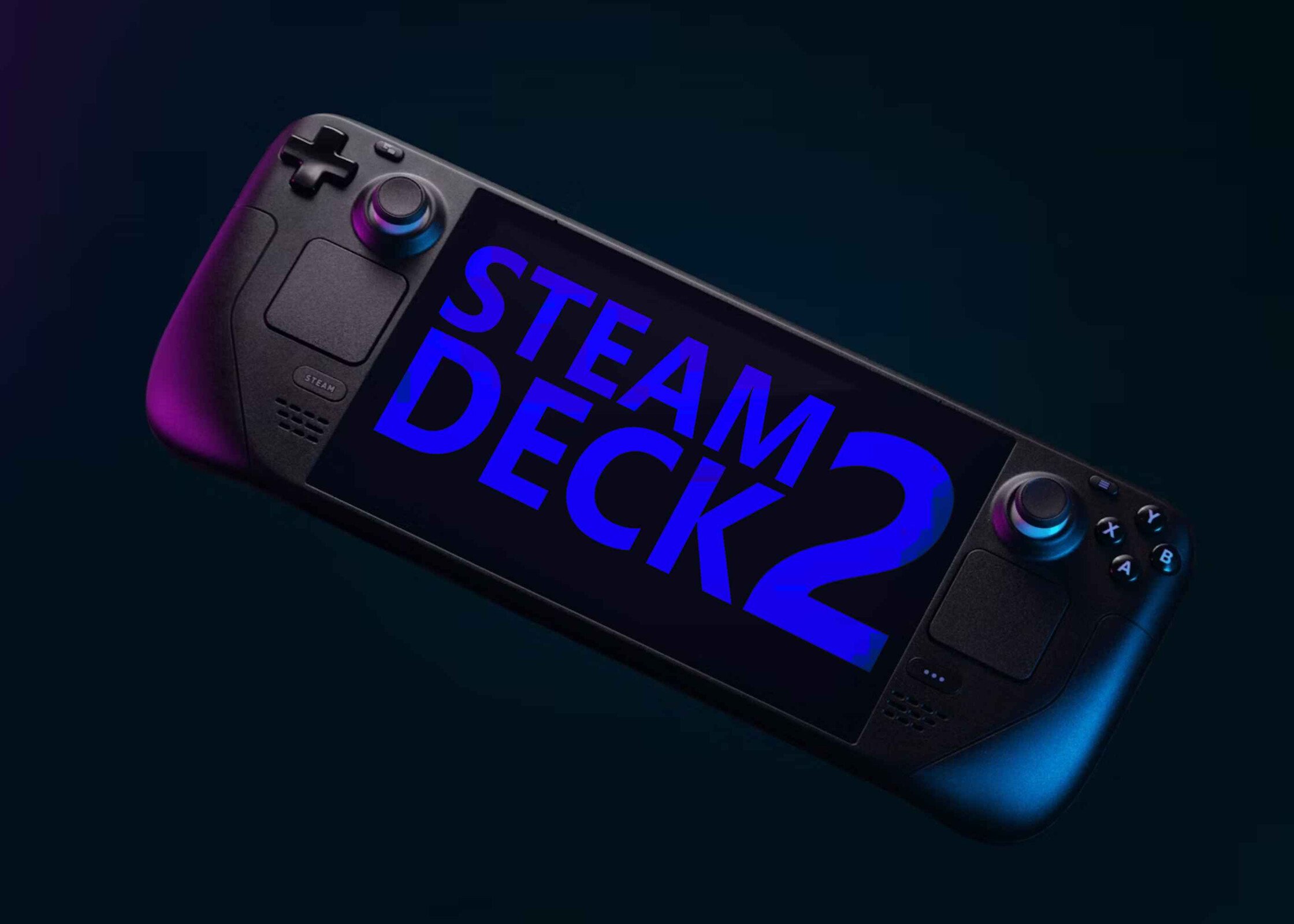Topher
Identifies as young
It looks like Microsoft is getting ready for big Xbox platform changes.
I’ve been thinking a lot about the next Xbox lately. While Microsoft publicly lines up a busy year of game releases and ports for the PS5 and Switch 2, the company has also been secretly building its future Xbox hardware and platform. There haven’t been any giant leaks about next-gen hardware yet, but Microsoft has been dropping hints over the past year that make it clear the next Xbox is going to be a lot different from the box that exists right now.
Microsoft is developing new console hardware that Xbox president Sarah Bond has said will deliver “the largest technical leap you will have ever seen in a hardware generation.” We’ve heard very little about next-gen hardware since that promise a year ago, and a lot has changed since internal documents from 2022 leaked and hinted that the next Xbox could arrive in 2028.
Xbox chief Phil Spencer said in a recent interview that he wants Microsoft “to innovate and make hardware the differentiator.” Spencer told me something similar a year ago, saying that Microsoft is “thinking about creating hardware that sells to gamers because of the unique aspects of the hardware. It’s kind of an unleashing of the creative capability of our hardware team that I’m really excited about.”
That unique or innovative hardware will almost certainly include a handheld somewhere in the mix. Spencer has teased the potential for an Xbox handheld a few times over the past year, but he warned in a November Bloomberg interview that such a device is a few years away and only at the prototype stage right now.
“I love when I see handhelds, when I see unique things that hardware manufacturers do, and I want our hardware to compete on power and innovation,” Spencer said in a recent interview. He didn’t expand on how Microsoft will make next-gen hardware different from its rivals, but unique and innovative hardware does suggest that hardware form factors and key platform changes will play a big part in unlocking a different kind of Xbox.
I’m convinced we’ll see some early parts of the next-gen Xbox platform this year, too. Jason Ronald, Microsoft’s VP of Next Generation, recently revealed to The Verge that Microsoft is combining “the best of Xbox and Windows together” for handhelds. I don’t think Microsoft is embarking on such a big project without these handheld-focused platform changes being the foundation for whatever Xbox hardware comes next.
How Microsoft brings the best bits of the Xbox UI to Windows-based handhelds is still a big unanswered question. Another is how this all impacts game development and your Xbox game library. Microsoft has been trying to bridge the Xbox and PC game development gap for years, using its “GameCore” developer-focused platform changes to make it easier for game creators to build titles for both Xbox and PC.
Spencer told Polygon last year that the Xbox team was looking at opening up its platform to rival stores like Itch.io and the Epic Games Store. Such a move would make it clear Microsoft is embracing a more PC-like approach for its next Xbox, which raises the question: do developers build games for Xbox or PC, or is it just the same thing in the future?
If it’s the same thing, Microsoft also needs to ensure you can play Xbox games on PC so that existing libraries don’t get left behind. Microsoft already built an Xbox 360 emulator for the Xbox One, and I think it will do the same to bring Xbox games to PC. Last month, I wrote about how Microsoft can turn Windows PCs into an Xbox and improve the Windows handheld situation at the same time.
AI will also play a big part in the next Xbox, especially for new form factors like handhelds. Nvidia, AMD, and Sony are all heavily involved in using AI-powered models to upscale games and improve performance and image quality, and we’re just weeks away from hearing how Nintendo plans to use Nvidia’s DLSS upscaling with its Switch 2 hardware. Microsoft is notably absent from this conversation, but Ronald dropped some hints at CES last month that the company could get a little more talkative soon.
”We think AI will be transformative, not only how games are made but also how games are played,” Ronald said last month. “There’s the content creation side which is really about enabling developers to build the games people want to play at a higher quality, and then there’s how the game actually runs. Delivering a new level of performance on different form factors at low power consumption.”
Ronald stopped short of saying how Microsoft will use AI-powered models to improve performance on different hardware, but it’s easy to imagine the company looking at something similar to PlayStation Spectral Super Resolution (PSSR) or Nvidia’s DLSS. These upscaling techniques have become increasingly important and popular on the PC side in recent years. Nvidia’s just-released RTX 5090 is $1,999 and heavily focuses on using AI models to multiply frame rates.
Microsoft already has its own Automatic Super Resolution feature that uses the NPUs on Qualcomm Copilot Plus PCs to enhance game visuals and improve frame rates. I suspect we’ll see something similar on the Xbox side, particularly because the DirectX team is driving this work at the core of Windows, and it will greatly benefit any Xbox handheld when it comes to battery life and performance.
When you add up the potential for an Xbox handheld, AI-powered technical leaps, and some big platform changes that combine Windows and Xbox, I think it’s clear that Microsoft is making the next Xbox even more PC-like. Xbox has been heading in that direction for years, and the Xbox Series X’s boxy, rectangular tower-like case even made it look like a PC in many ways. If Microsoft’s Windows handheld platform changes are actually at the heart of the next-generation Xbox platform, it could make for some very different Xbox hardware.
Microsoft has been steadily trying to move the Xbox name beyond its console-centric brand this generation. It’s becoming increasingly clear that what we’d normally consider the next Xbox won’t be just a single piece of hardware, but a collection of devices that can all play Xbox games.
That would really explain Microsoft’s “this is an Xbox” marketing campaign, which feels more like a vision of the future than the reality right now. It’s a future where PC makers can turn their laptops or handhelds into an Xbox or where phones stream all of your Xbox games. Microsoft is laying the groundwork to make this all a reality, and if it can pull it off, then the next Xbox really will be unlike anything we’ve seen before.
I’ve been thinking a lot about the next Xbox lately. While Microsoft publicly lines up a busy year of game releases and ports for the PS5 and Switch 2, the company has also been secretly building its future Xbox hardware and platform. There haven’t been any giant leaks about next-gen hardware yet, but Microsoft has been dropping hints over the past year that make it clear the next Xbox is going to be a lot different from the box that exists right now.
Microsoft is developing new console hardware that Xbox president Sarah Bond has said will deliver “the largest technical leap you will have ever seen in a hardware generation.” We’ve heard very little about next-gen hardware since that promise a year ago, and a lot has changed since internal documents from 2022 leaked and hinted that the next Xbox could arrive in 2028.
Xbox chief Phil Spencer said in a recent interview that he wants Microsoft “to innovate and make hardware the differentiator.” Spencer told me something similar a year ago, saying that Microsoft is “thinking about creating hardware that sells to gamers because of the unique aspects of the hardware. It’s kind of an unleashing of the creative capability of our hardware team that I’m really excited about.”
That unique or innovative hardware will almost certainly include a handheld somewhere in the mix. Spencer has teased the potential for an Xbox handheld a few times over the past year, but he warned in a November Bloomberg interview that such a device is a few years away and only at the prototype stage right now.
“I love when I see handhelds, when I see unique things that hardware manufacturers do, and I want our hardware to compete on power and innovation,” Spencer said in a recent interview. He didn’t expand on how Microsoft will make next-gen hardware different from its rivals, but unique and innovative hardware does suggest that hardware form factors and key platform changes will play a big part in unlocking a different kind of Xbox.
I’m convinced we’ll see some early parts of the next-gen Xbox platform this year, too. Jason Ronald, Microsoft’s VP of Next Generation, recently revealed to The Verge that Microsoft is combining “the best of Xbox and Windows together” for handhelds. I don’t think Microsoft is embarking on such a big project without these handheld-focused platform changes being the foundation for whatever Xbox hardware comes next.
How Microsoft brings the best bits of the Xbox UI to Windows-based handhelds is still a big unanswered question. Another is how this all impacts game development and your Xbox game library. Microsoft has been trying to bridge the Xbox and PC game development gap for years, using its “GameCore” developer-focused platform changes to make it easier for game creators to build titles for both Xbox and PC.
Spencer told Polygon last year that the Xbox team was looking at opening up its platform to rival stores like Itch.io and the Epic Games Store. Such a move would make it clear Microsoft is embracing a more PC-like approach for its next Xbox, which raises the question: do developers build games for Xbox or PC, or is it just the same thing in the future?
If it’s the same thing, Microsoft also needs to ensure you can play Xbox games on PC so that existing libraries don’t get left behind. Microsoft already built an Xbox 360 emulator for the Xbox One, and I think it will do the same to bring Xbox games to PC. Last month, I wrote about how Microsoft can turn Windows PCs into an Xbox and improve the Windows handheld situation at the same time.
AI will also play a big part in the next Xbox, especially for new form factors like handhelds. Nvidia, AMD, and Sony are all heavily involved in using AI-powered models to upscale games and improve performance and image quality, and we’re just weeks away from hearing how Nintendo plans to use Nvidia’s DLSS upscaling with its Switch 2 hardware. Microsoft is notably absent from this conversation, but Ronald dropped some hints at CES last month that the company could get a little more talkative soon.
”We think AI will be transformative, not only how games are made but also how games are played,” Ronald said last month. “There’s the content creation side which is really about enabling developers to build the games people want to play at a higher quality, and then there’s how the game actually runs. Delivering a new level of performance on different form factors at low power consumption.”
Ronald stopped short of saying how Microsoft will use AI-powered models to improve performance on different hardware, but it’s easy to imagine the company looking at something similar to PlayStation Spectral Super Resolution (PSSR) or Nvidia’s DLSS. These upscaling techniques have become increasingly important and popular on the PC side in recent years. Nvidia’s just-released RTX 5090 is $1,999 and heavily focuses on using AI models to multiply frame rates.
Microsoft already has its own Automatic Super Resolution feature that uses the NPUs on Qualcomm Copilot Plus PCs to enhance game visuals and improve frame rates. I suspect we’ll see something similar on the Xbox side, particularly because the DirectX team is driving this work at the core of Windows, and it will greatly benefit any Xbox handheld when it comes to battery life and performance.
When you add up the potential for an Xbox handheld, AI-powered technical leaps, and some big platform changes that combine Windows and Xbox, I think it’s clear that Microsoft is making the next Xbox even more PC-like. Xbox has been heading in that direction for years, and the Xbox Series X’s boxy, rectangular tower-like case even made it look like a PC in many ways. If Microsoft’s Windows handheld platform changes are actually at the heart of the next-generation Xbox platform, it could make for some very different Xbox hardware.
Microsoft has been steadily trying to move the Xbox name beyond its console-centric brand this generation. It’s becoming increasingly clear that what we’d normally consider the next Xbox won’t be just a single piece of hardware, but a collection of devices that can all play Xbox games.
That would really explain Microsoft’s “this is an Xbox” marketing campaign, which feels more like a vision of the future than the reality right now. It’s a future where PC makers can turn their laptops or handhelds into an Xbox or where phones stream all of your Xbox games. Microsoft is laying the groundwork to make this all a reality, and if it can pull it off, then the next Xbox really will be unlike anything we’ve seen before.









